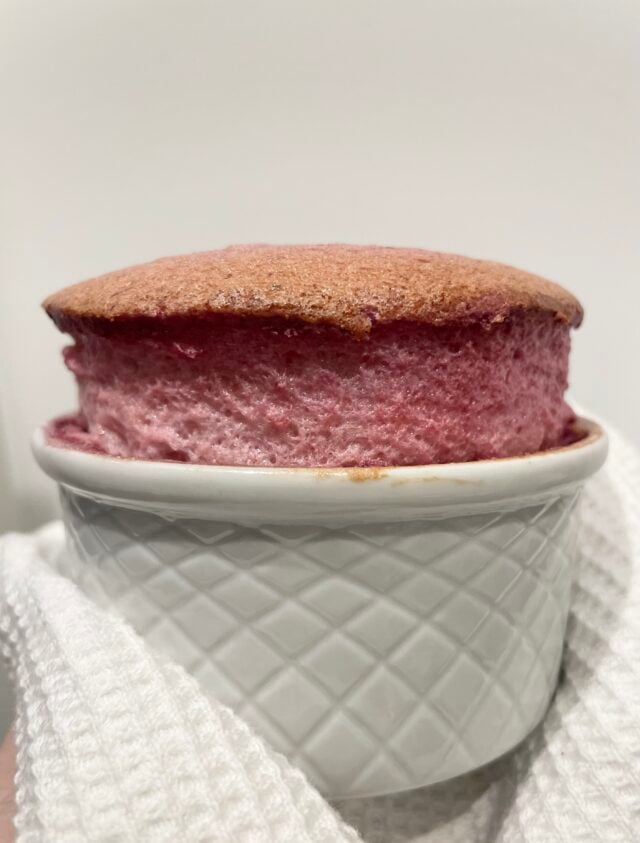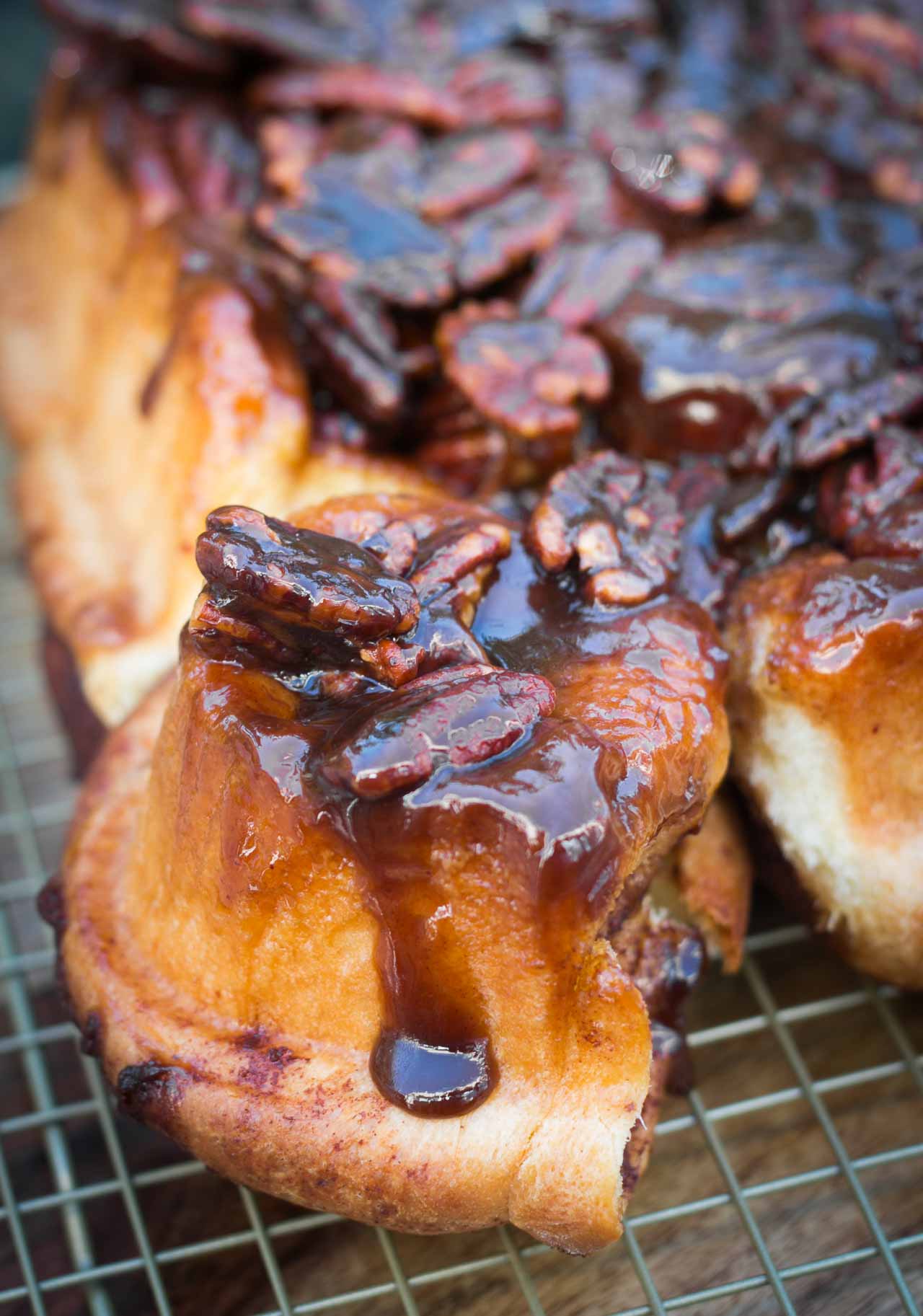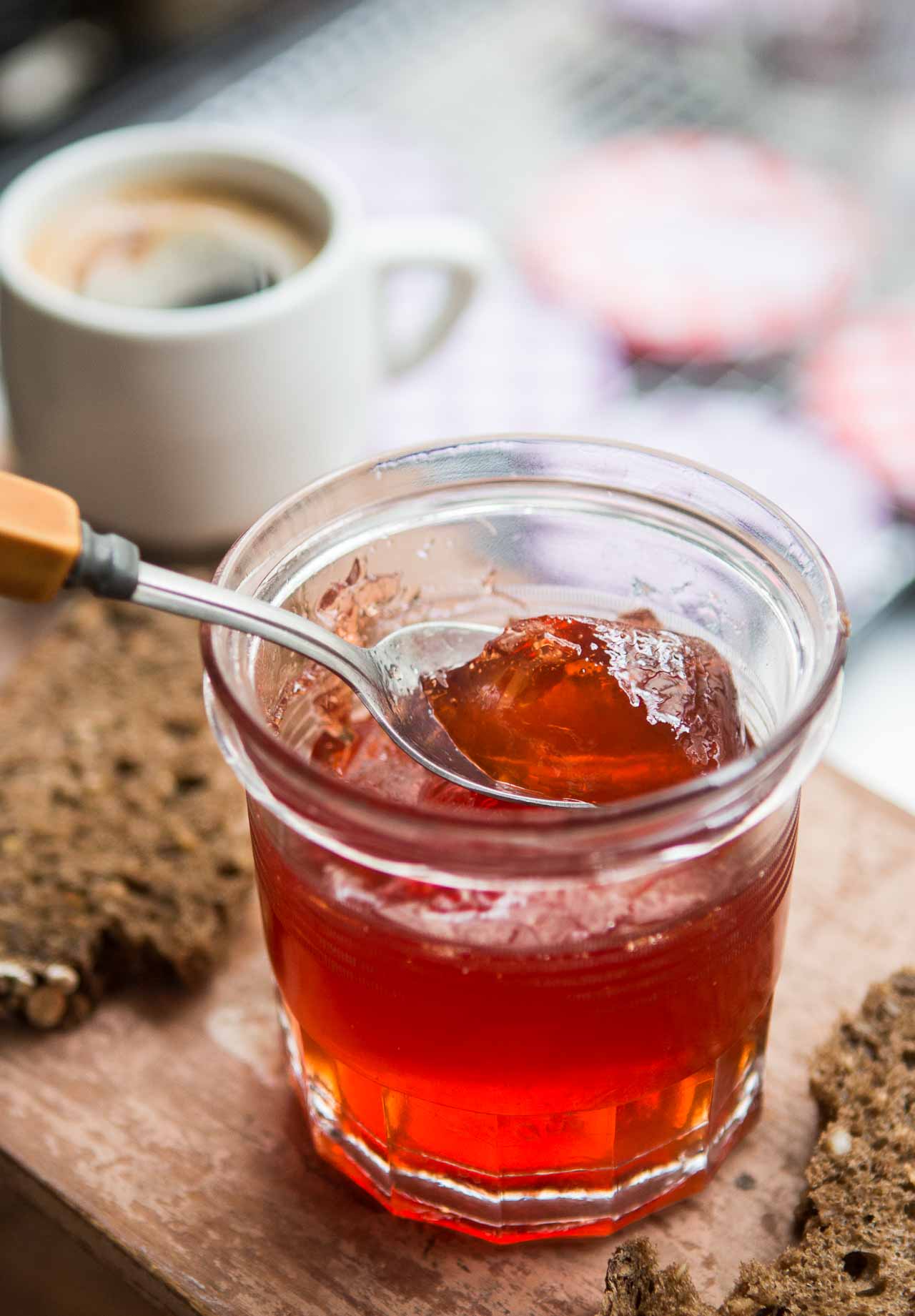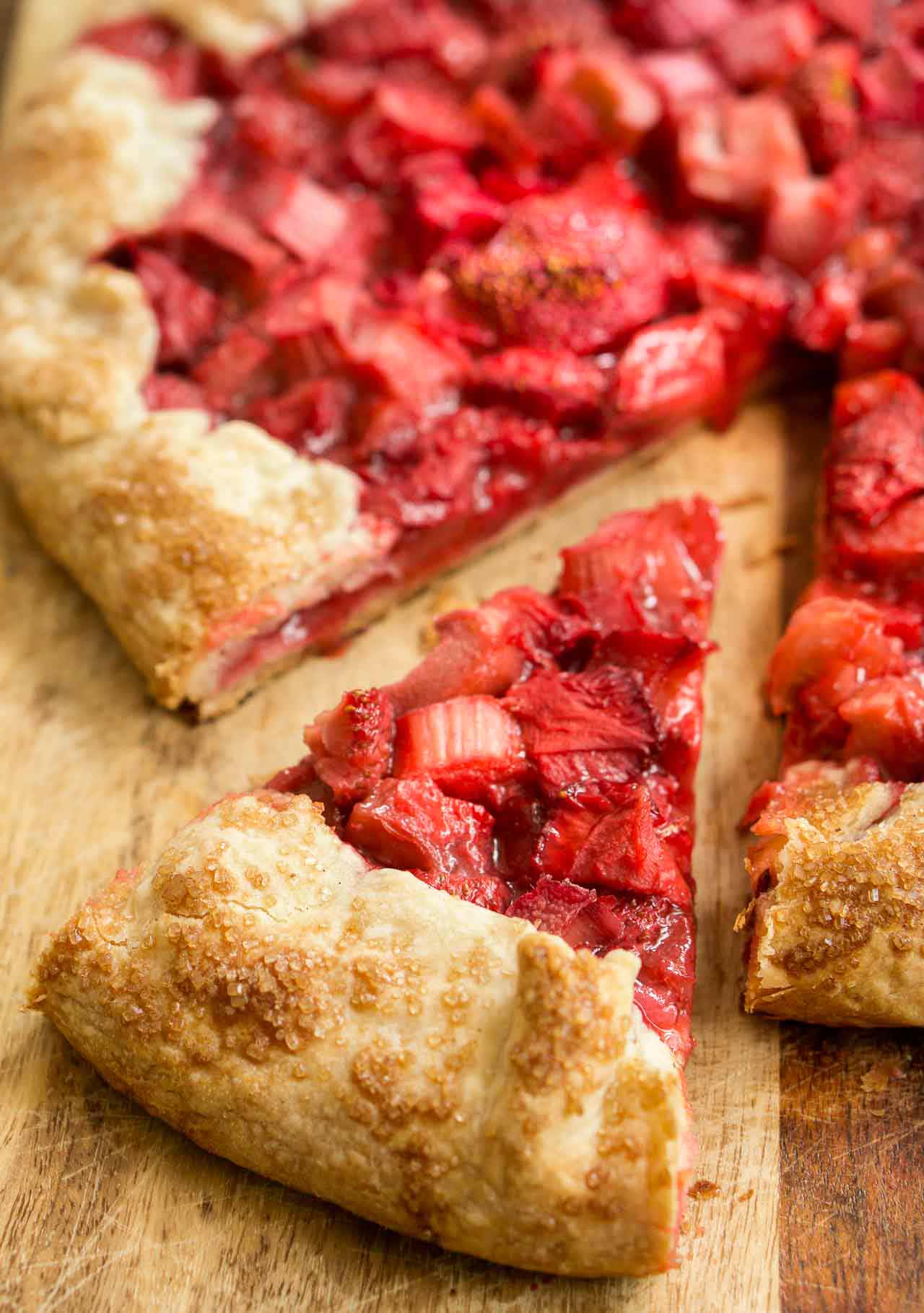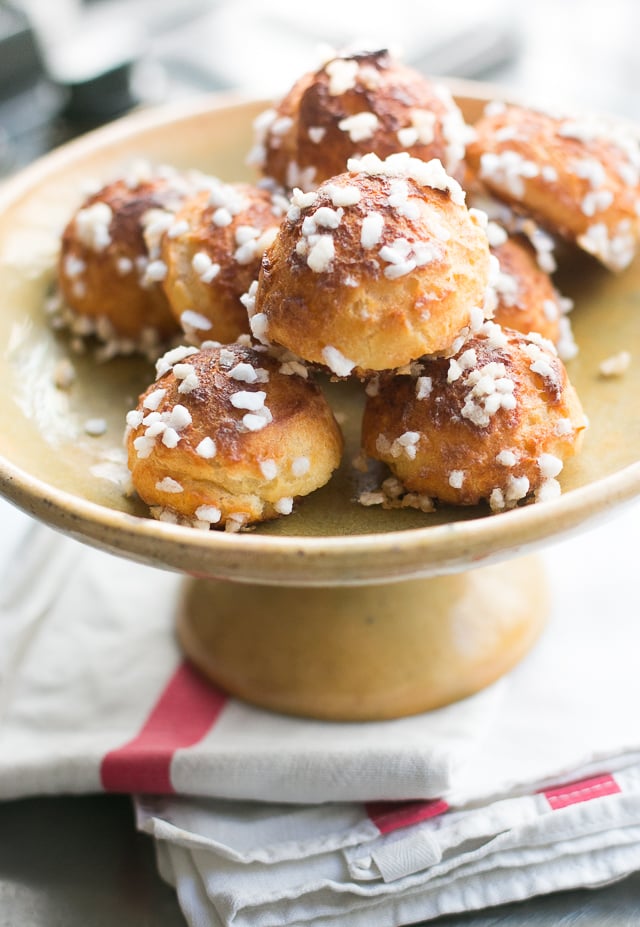My Top Soufflé Secrets
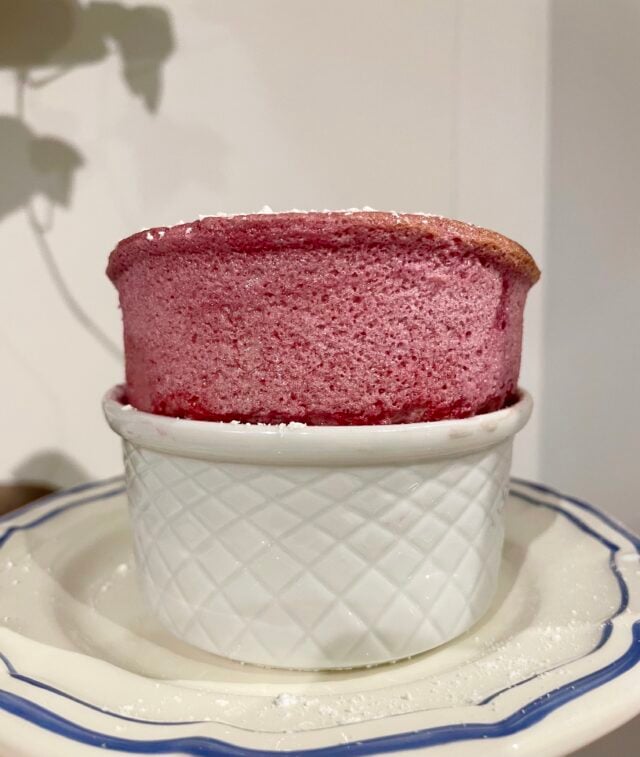
The word soufflé in French means breath, which is an excellent name for these light as air treats. They’re easy and fun to make, can go from thought to table in 30 minutes and the ingredients are cheap and readily available (almost every grocery store has eggs). The only hard part is accepting that they must be eaten immediately, there’s no way around it.
A savory soufflé makes an excellent weeknight meal when the fridge is a little bare, either by itself or served with a little side salad, and it’s a great way to use up any herbs or that last piece of cheese that’s been hanging around a little too long. I really enjoy serving a sweet soufflé for dessert when we have guests as it’s full of flavour but doesn’t leave you feeling heavy when you leave the table.
Below I’m sharing my top tips and tricks, plus my favourite raspberry soufflé recipe, and I hope you’ll try out this this wonderful French dish.
– Emily
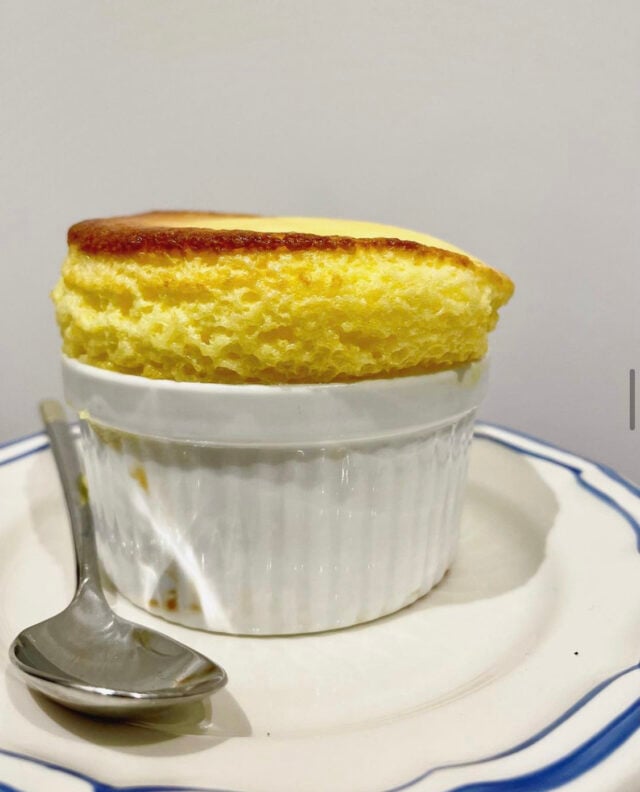
A soufflé is made up of a base (usually white sauce or creme patissiere enriched with egg yolks), a flavor (added to the base) and whipped egg whites gently folded in and baked in the oven. While it’s cooking, the air trapped in the egg whites expands, causing it to rise. The proteins stiffen a little during baking but when the air cools and starts to escape, there isn’t enough ‘scaffolding’ to hold them up, so they deflate, even when expertly made. Ironically the thing that makes them so fluffy and wonderful (hot air) is the thing that ensures they are so fleetingly perfect.
An electric whisk, rubber spatula and scale are the main pieces of equipment you need, but you can use a handheld whisk, large spoon and cups if that’s what you’ve got. A ramekin with straight sides will help the soufflé rise but you can bake them in almost anything that can go in the oven. I sometimes like to bake them in a frying pan or baking dish and serve sharing style directly on the table. It’s up to you how rustic or refined you want your soufflé to be and there are directions for each style below.
Organization is key. Get everything lined up before you start, including garnishes, plates and spoons for serving, and the camera if you want to photograph it. Don’t make the mistake of pulling your gorgeous soufflés out of the oven and letting them fall while you go searching for the icing sugar. I once participated in a soufflé masterclass at a top London hotel where the head pastry chef shared that their soufflé option for weddings and big events cost thousands of pounds extra, not because the ingredients were expensive or that they’re technically challenging to make, but to pay for the extra wait staff necessary to line up and dash them from the oven to the table as quickly as possible.
Get to know your oven and keep notes, especially on cooking times. I know mine runs around 10 degrees Celsius hotter than the dial shows, so I adjust accordingly. If the temperature is too low, the soufflé won’t rise properly. If the temperature is too high, the soufflé will rise with big air pockets inside and fall incredibly quickly. Adjust the timing and temperature depending on what you’re baking it in, e.g. for a frying pan or baking dish you’ll want a slightly lower temperature to accommodate the larger volume and if you use tiny little ramekins it’ll cook quicker.
Most domestic ovens, no matter how fancy they are, cook unevenly which is just part of life. My oven blows hotter from one corner, which causes lots of things to lean in that direction, so when baking I usually rotate things at least once during cooking but I don’t bother for soufflés as the anticipation of how they’ll turn out is part of the fun.
Eggs like gentle cooking so move your oven rack to the lower third of the oven where they’ll have a chance to cook properly without going too brown on top (this goes for meringue, custard tarts and quiches too). If you have a baking tray set it on the rack to heat and it’ll help cook the soufflés from the bottom, as well as make it easier to pull them out of the oven when they’re done.
Use room temperature butter to coat your ramekins (or whatever you’re planning to bake your soufflé in) instead of melted to get better coverage. Brush it vertically up the sides and the little lines from the pastry brush will help ‘guide’ the soufflé to rise up. You need to coat the inside of the dish with a dry ingredient as well: cocoa or sugar work for sweet, parmesan or bread crumbs work well for savory.
When separating your eggs, break them on a flat surface, not on the edge of the bowl, for a better ‘crack’ and less chance of shell in the dish or piercing the yolk. Always use a clean bowl for the whites and if you accidentally get any yolk in there you need to start again (set aside the first set to make scrambled eggs or a nice omelette).
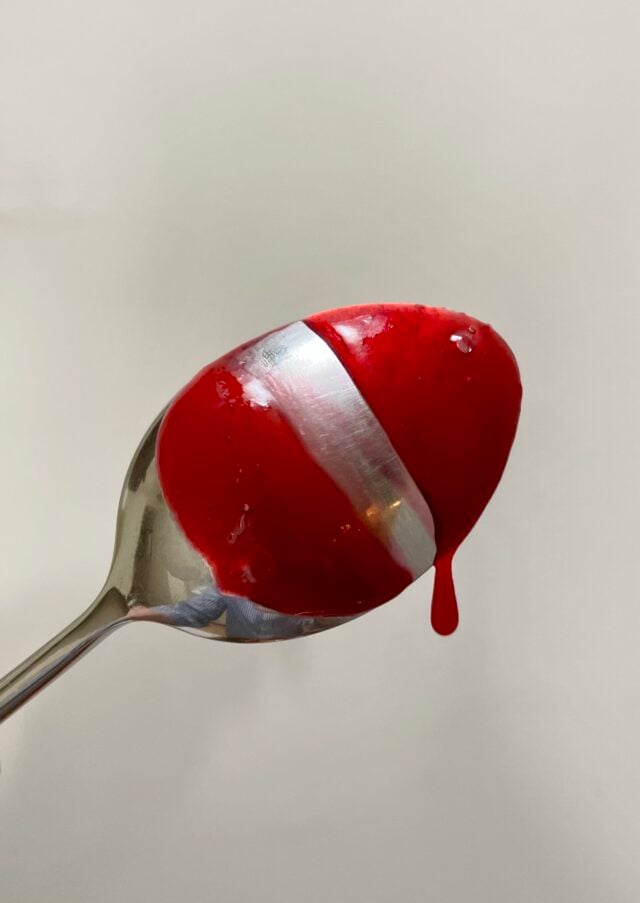
When making your base, make sure it’s cooled a little before you add in any eggs so they don’t cook before they’re mixed in properly. The base can be prepared in advance and left in the refrigerator, just bring it to room temperature before mixing in the egg whites.
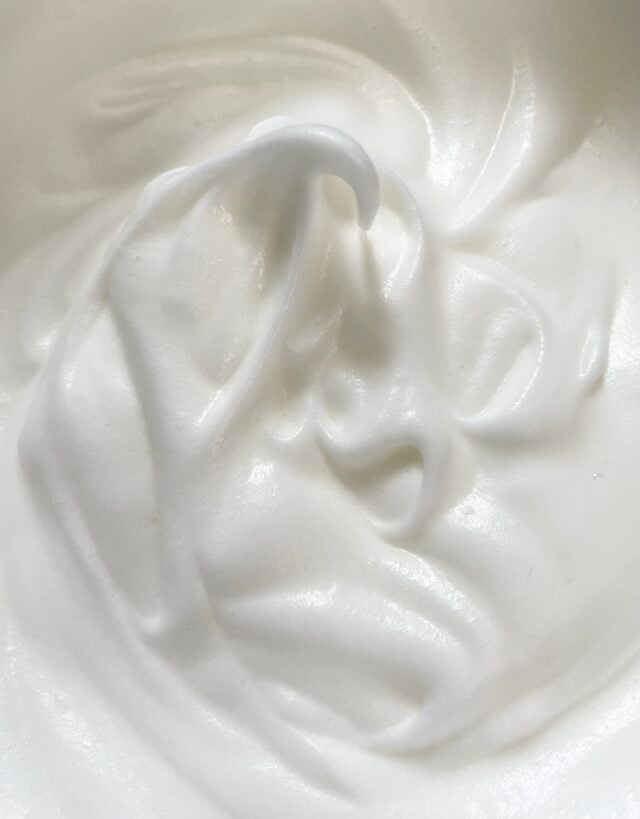
Always whip your egg whites on the slowest speed, which creates small and stable bubbles. It’s tempting to whip them on the highest speed because it’s fun and quick, but you’ll create larger bubbles which will rise impressively and then fall really quickly. If you’re making a sweet version, as soon as the whites form soft peaks add in a little sugar (20 or 30g per 4 egg whites is enough) and mix until it’s smooth and glossy. It the recipe doesn’t hold any sugar back for this step you can adjust the quantities yourself. The sugar helps stabilize the mix by giving the egg white proteins something to ‘build’ around. If you’re making a savoury version be sure not to over whip the whites. Better to underwhip them then to go over.
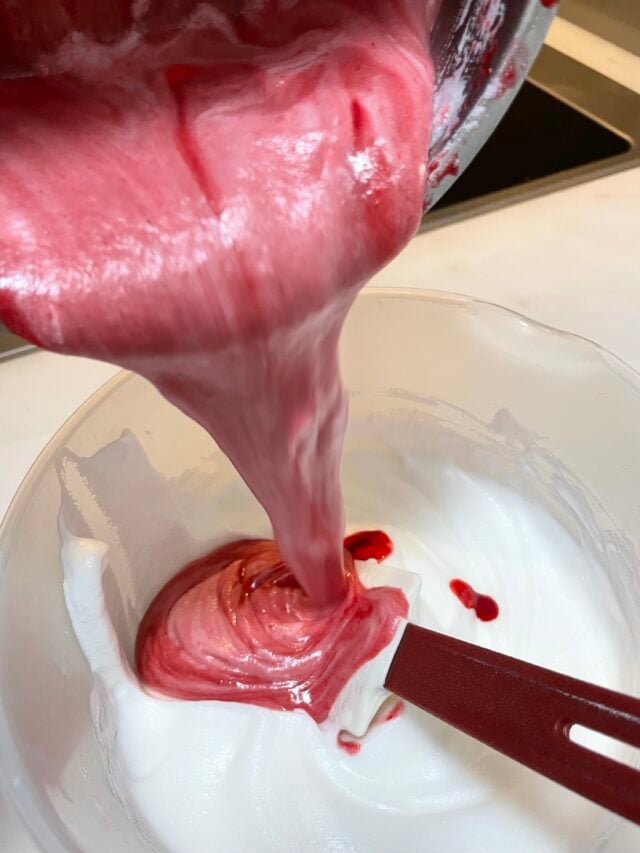
Once your base and egg whites are ready – it’s go time. Take a large scoop of your egg white mixture and mix it well into your base. This loosens the base up and makes it easier to fold in the egg whites without losing too much of the volume. Then pour the loosened base mixture into the bowl with the egg whites and with a spatula or large spoon, gently fold it into the whipped egg whites. Scoop up from the bottom of the bowl and over the top in a firm swooping motion as few times as possible until it’s evenly mixed. If there’s still some streaks of egg white left that’s fine but be careful there isn’t a puddle of your base hiding at the bottom of the bowl.
How you fill your ramekins will determine the look of your final soufflé. The easiest option is to spoon the mixture into the ramekin, being careful not to create any large air pockets, until it’s about three quarters full and tap it very gently so the mixture evens out. This will give you a soft, cloud-like look as it puffs up. If using a frying pan or baking dish, pile the mix into the middle and it will puff up beautifully.
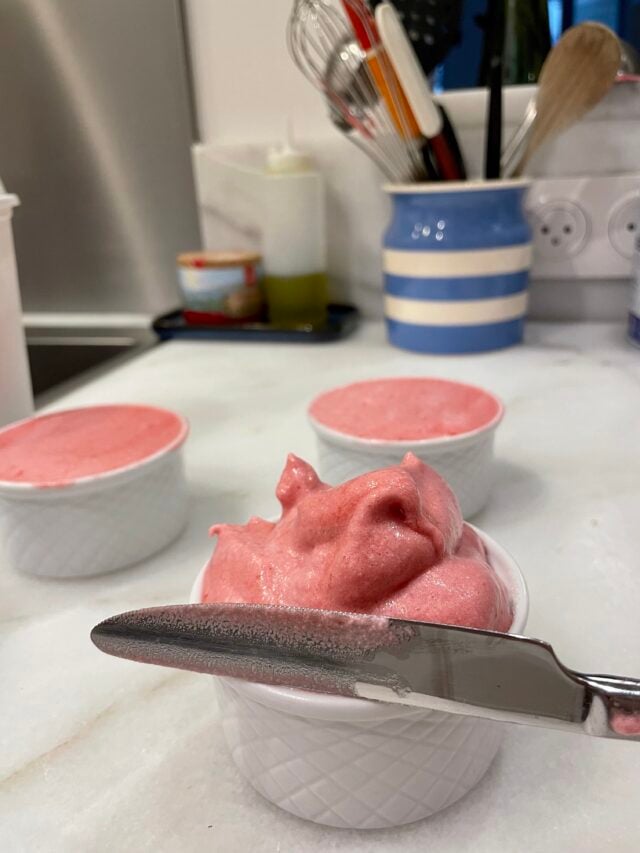
If you’re going for the classic flat top soufflé appearance, fill the ramekin until it’s overflowing, then with the back of a cutlery knife swipe it across the top of the ramekin in one swift motion so it knocks off any excess mixture (do this over a bowl to catch the excess mixture). Run a cutlery knife all the way around the inside lip of the ramekin to create a ‘top hat’ effect, which will ensure the soufflé rises above the rim and doesn’t stick to the sides. If you get any mix on the ramekin wipe it off with a damp sponge as it will bake on and it’s not fun to clean later (plus it gives a neater appearance).
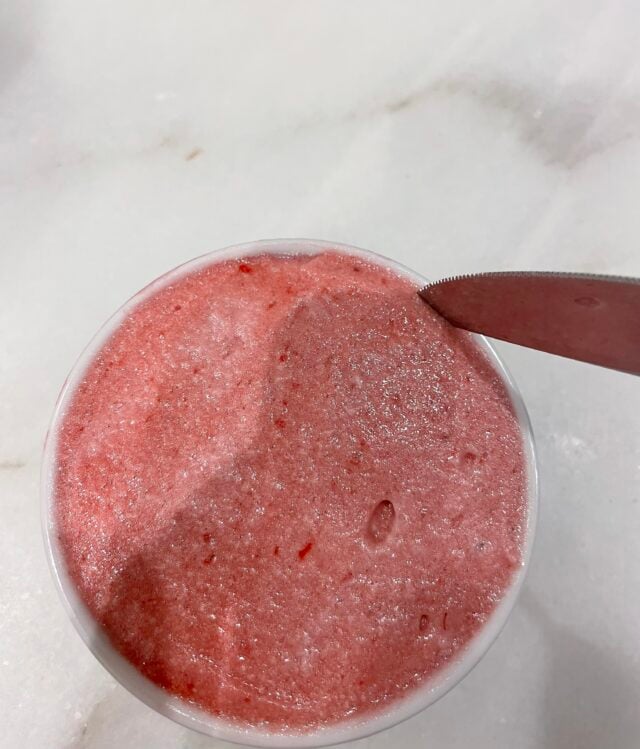
Contrary to popular belief, you can make soufflés in advance. You can either make the base in advance and whip the egg whites and fold them in just before baking, or you can fully make and assemble them in ramekins and leave in the fridge for up to two hours. The lighter the base mixture, the longer it will hold. They also freeze beautifully. If you cook them from fridge cold add a minute or so to the cooking time and if you’re cooking from frozen add an an extra few minutes.
Once the top is golden and it’s risen up significantly it’s safe to open the oven door. If there’s a slight wobble and the top is firm to the touch then it’s probably ready. If it’s looks like it’s still quite liquid then leave it for a few more minutes. Technically it should have a teaspoon or so of undercooked center, which is called baveuse, but it’s up to you to decide how you like your soufflé, you’re the one eating it. At culinary school we had a soufflé challenge in one of the exams where the teacher could come up to us at any point (while we were preparing a four course meal) and demand a soufflé of any flavour, to be served between 28-32 minutes later, timed with a stopwatch. We had steel oven doors so there was no checking if it was cooked – we had to go on blind faith. Apparently mine “could have done with 15 more seconds” which I met with a discreet eye roll.
Cooking is supposed to be fun, so don’t make soufflés for the first time for a big event or important dinner party, it’s not worth the stress, and the ingredients are cheap so try them out beforehand. And remember even the best cooks have off days so for extra insurance never tell your guests that soufflé is on the menu, that way if it collapses you can add a garnish or a scoop of icecream and call it ‘baked eggs’ or a ‘fruit pudding’ and no-one will ever know.
If you’re looking for soufflés in Paris you can head to La Cuisine de Philippe or La Soufflé which specialize in, you guessed it, soufflés. Or book a soufflé class in my Parisian kitchen and I’ll teach you how to make them myself.
I’d love to hear your soufflé stories and tips in the comments below.
Bon appétit!
– Emily
Raspberry Soufflé
- 250g (1 cup) frozen raspberries
- 50g (1/4 cup) + 30g (1/8 cup + 1 tsp) sugar, plus some for dusting
- 10g (2 & a 1/2tsp) cornflour (cornstarch or maizena)
- 15g (3 tsp) water
- 4 egg whites
- Butter for the ramekins
- icing sugar to sprinkle before serving (optional)
- Preheat your oven to 350F (180C) and put on an apron as raspberry puree tends to stain.
- Put the raspberries (I use frozen but fresh in season would be lovely) in a small saucepan with 50g sugar and a splash of water. Heat on medium for a few minutes until the sugar is melted and the raspberries have fallen apart.
- While that's cooking, butter the ramekins brushing vertically up the sides, coat with sugar and tap out any excess.
- Pass the raspberry mix through a sieve (you can leave the seeds in, I tried it and it's ok but I prefer it without). Make sure to keep sieving even when you think it's done as the puree at the end is the best part. Alternatively use 220g ready made puree – you could try other fruits as well.
- Mix the cornflour and water together in a glass (this prevents any cornflour lumps) and tip into the raspberry puree. Heat on medium while continuously stirring gently until you see a volcanic bubble and the mix has visibly thickened. Set aside to cool.
- Crack your eggs and beat the whites until just stiff (you can make icecream with the yolks). Add the 30g of sugar little by little as you continue to mix until it's thick and glossy.
- Add some of the egg whites into the raspberry mix and stir to loosen. Then tip the raspberry/egg white mixture back into the bowl of egg whites and gently fold it together. A few streaks of egg white are fine but be careful there isn't a puddle of raspberry pure left at the bottom of the bowl.
- Fill the ramekins being careful to avoid large pockets of air. Even them with the back of a knife so they're perfectly flat (optional). Run a knife about half a centimetre (1/8 inch) deep all the way around the edge to leave a little line that will help them rise evenly.
- Bake in the bottom 3rd of the oven for around 7/8 minutes – until they're well risen and slightly firm to touch on the top. They're supposed to have a tiny bit of uncooked mousse in the middle but it's not necessary (it's called baveuse).
- Serve immediately – have your plates, spoons and icing sugar to sprinkle all ready!
Notes
I tested this recipe to show you how it can hold in the fridge or freezer. Here are the results.
Baked immediately:

Baked after 30 minutes in the fridge:
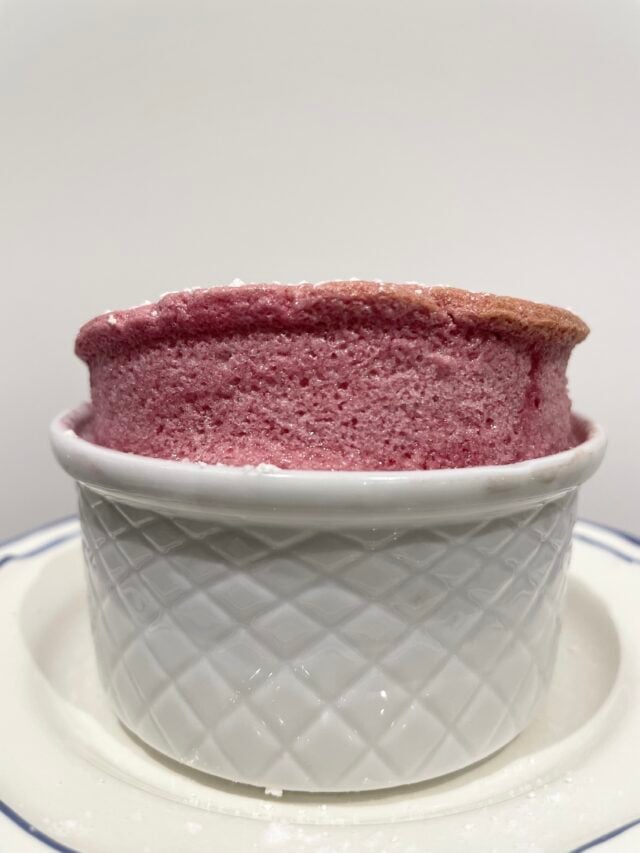
Baked after 2 hours in the fridge:
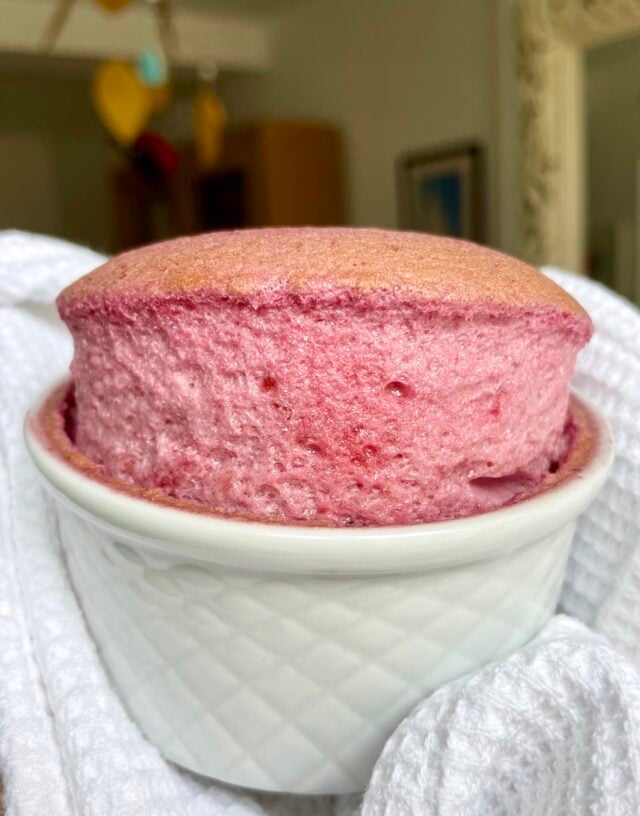
Baked from frozen:
